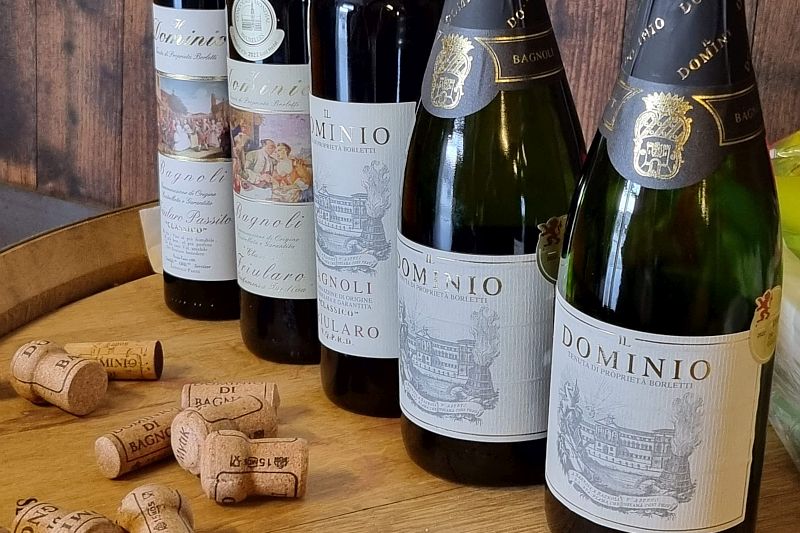Italy stands as one of the world’s most celebrated wine-producing nations, with a viticultural heritage spanning over 3,000 years. From the snow-capped Alps in the north to the sun-drenched islands of Sicily and Sardinia in the south, Italy’s 20 wine regions offer an extraordinary diversity of terroirs, grape varieties, and winemaking traditions that reflect the country’s rich cultural heritage.
What makes Italian wine truly exceptional is its incredible variety of indigenous grape varieties—over 350 native cultivars that have been carefully preserved and cultivated for centuries. Each region tells its own unique story through wine, shaped by distinct microclimates, soil compositions, and local traditions that have been passed down through generations of winemaking families.
For wine enthusiasts beginning their Italian wine journey, understanding these regional differences is crucial. Italy’s wine classification system, anchored by DOC (Denominazione di Origine Controllata) and DOCG (Denominazione di Origine Controllata e Garantita) designations, ensures quality and authenticity while preserving the distinctive character of each region.
Whether you’re drawn to the powerful Nebbiolo wines of Piedmont, the elegant Sangiovese expressions from Tuscany, or the crisp Prosecco from Veneto, Italian wines offer something for every palate and occasion. This comprehensive guide will navigate you through Italy’s most important wine regions, highlighting their signature grape varieties, iconic wines, and what makes each area special in the global wine scene.
Northern Italy: Alpine Influences and Elegant Expressions

Piedmont: The King of Italian Wine Regions
Piedmont, located in northwestern Italy near the French and Swiss borders, represents the pinnacle of Italian winemaking excellence. This region accounts for approximately 11% of Italy’s DOC production and is renowned for producing some of the world’s most prestigious red wines. The star grape variety here is Nebbiolo, which creates the legendary Barolo and Barbaresco wines—full-bodied expressions with strong tannins, floral notes, and remarkable aging potential.
Beyond Nebbiolo, Piedmont excels with Barbera, the most widely planted red grape in the region, producing wines with bright acidity and cherry flavors. The region also produces exceptional Moscato d’Asti, offering a delightful contrast to its powerful reds with sweet, aromatic white wines perfect for dessert pairings.
Veneto: Volume Meets Quality
Veneto stands as Italy’s largest wine-producing region by volume, yet maintains impressive quality standards across its diverse portfolio. Located in northeastern Italy, Veneto benefits from varied microclimates created by the Alps to the north, Lake Garda to the west, and the Adriatic Sea to the southeast.
The region is globally famous for Prosecco, particularly from the prestigious Conegliano Valdobbiadene DOCG area. Veneto’s red wine reputation rests on Corvina, the principal grape in Valpolicella and the magnificent Amarone della Valpolicella—wines created through the unique appassimento process of drying grapes to concentrate flavors. These Amarone wines can age for over 40 years and command spectacular prices due to their complexity and raisin-like intensity.
Friuli-Venezia Giulia: White Wine Excellence
Positioned in Italy’s far northeast corner bordering Austria and Slovenia, Friuli-Venezia Giulia represents approximately 6% of DOC production while specializing in exceptional white wines. The region’s unique climate, influenced by Alpine and coastal conditions, creates optimal growing conditions for both white and red grape varieties.
Friuli excels particularly with Pinot Grigio and Sauvignon Blanc, producing more intensely flavored styles than found elsewhere in Italy. The region’s Pinot Grigio includes unique expressions like Ramato, while their Sauvignon Blanc displays distinctive meaty undertones that set it apart from international examples.
Central Italy: Tuscan Traditions and Hidden Gems

Tuscany: The Heart of Italian Wine Culture
Tuscany embodies the romantic image of Italian wine country with its rolling hills, medieval towns, and cypress-lined vineyards. The region’s wine identity centers around Sangiovese, the noble grape behind iconic wines like Chianti and Brunello di Montalcino. Tuscan Sangiovese wines are celebrated for their complex flavors, balanced acidity, and excellent aging potential.
Modern Tuscany has also embraced international grape varieties, with many producers creating “Super Tuscans” using Cabernet Sauvignon and Merlot alongside traditional varieties. This innovation has helped establish Tuscany as a dynamic region that honors tradition while embracing modern winemaking techniques.
Umbria: The Green Heart of Italy
Umbria, known for its lush landscapes and undulating terrain, produces wines that are typically full-bodied and suitable for aging. While smaller in production compared to neighboring regions, Umbria creates distinctive wines using Sangiovese and the unique Sagrantino grape. Sagrantino di Montefalco stands out for its exceptional tannic strength and complexity, representing one of Italy’s most distinctive red wine expressions.
Southern Italy: Sun-Soaked Intensity and Ancient Varieties

Campania: Volcanic Terroir and Ancient Grapes
Campania, with Naples as its capital, showcases the unique character that volcanic soils bring to winemaking. The region’s wines benefit from the mineral-rich volcanic earth, creating distinctive flavor profiles that reflect this ancient terroir. Aglianico serves as the region’s flagship red grape, considered one of Italy’s three greatest varieties alongside Sangiovese and Nebbiolo. Often called “The Barolo of the South,” Aglianico produces the prestigious Taurasi DOCG wines.
The region also excels with white varieties like Falanghina and Greco di Tufo, which thrive in the volcanic soils and produce wines with remarkable minerality and aging potential.
Puglia: The Heel of the Boot
Located in the heel of Italy’s boot-shaped peninsula, Puglia produces robust, full-bodied wines that reflect the warm southern climate. The region specializes in Primitivo (genetically identical to California’s Zinfandel) and Negroamaro, creating wines with intense dark fruit flavors and spicy characteristics. Puglia’s wines offer excellent value, combining quality with accessibility for wine enthusiasts seeking authentic Italian expressions.
Sicily: Mediterranean Island Excellence
As the largest island in the Mediterranean, Sicily has emerged as one of Italy’s most exciting wine regions. The island’s unique terroir supports distinctive grape varieties like Nero d’Avola for reds and Grillo for whites. Sicilian wines are typically full-bodied and complex, with flavors of dark fruit and spice that reflect the intense Mediterranean sun and diverse soil types across the island.
Lesser-Known Gems: Exploring Italy’s Smaller Wine Regions
Molise: The Hidden Treasure
Molise, Italy’s second smallest wine region, represents a relative newcomer to the wine world, with its DOC areas established only in the 1980s. Despite its small size, producing around 400,000 hectolitres annually, Molise creates impressive wines primarily from Aglianico and Falanghina. The region also produces significant quantities of Montepulciano, Greco, Trebbiano, and Sangiovese.
Basilicata: Volcanic Power
Basilicata may account for only 0.1% of DOC production, but it creates some of Italy’s most intimidating and impressive Aglianico wines. These wines grow on the slopes of Mount Vulture, an extinct volcano, creating wines with extraordinary intensity and mineral complexity that showcase the power of volcanic terroir.
Embracing Italian Wine Diversity
Italian wine regions offer an unparalleled journey through diverse terroirs, ancient grape varieties, and time-honored winemaking traditions. From the elegant Nebbiolo wines of Piedmont to the volcanic-influenced Aglianico of the south, each region contributes unique expressions to Italy’s remarkable wine heritage. For beginners, exploring Italian wines means discovering not just beverages but cultural artifacts that tell the story of Italy’s rich history, geography, and passion for excellence in winemaking.


